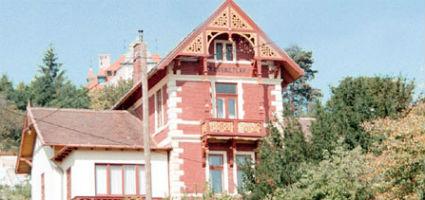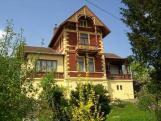 |
Address: 2621, Verőce Szamos utca 22.
Phone number: (30) 717-7206
E-mail: gorkamuzeum@veroce.hu
Opening hours: 01.04 - 31.10.: Fri 9-13, Sat-Sun 10-16, Mon-Thu: only on prior notice, 01.11 - 31.03: only on prior notice
|
|
Ticket for adults
|
600 HUF
|
|
|
Ticket for students
|
300 HUF
|
|
|
Ticket for pensioners
|
300 HUF
|
|
|
Group guide
|
4000 HUF
|
/ group
|
|
Group guide for students
|
2000 HUF
|
/ group
|
Géza Gorka, Lívia Gorka, Géza Gorka Focht – three generations, three artists influencing Hungarian ceramic art of the 20th. The exhibition dealing with their art exhibition is the continuation of the series showing great 20th-century Hungarian pottery artists in the International Ceramics Centre of Hódmezõvásárhely.
The curator of the exhibition is the Ferenczy Noémi Prize awarded Zsuzsa Pannonhalmi, director of the Wartha Vincze Ceramic Art Foundation. she intends to show and document professional development and trends in Hungarian ceramic art.
The head of the dynasty, Géza Gorka (1894–1971)came from Hungarian folk pottery and ended up with unique forms of ceramic industry art form, decoration of glaze technology. "Ceramic art does not need the way of expression of other art forms co, because fire makes it an independent genre" - he explained. His figural ceramic objects in Art Deco style were sought after all over the world. The typical "Gorka" means, cracked glazed ceramics he "invented" demonstrated his famous statement he made at a young age: "The audience will just want what I do." According to his daughter, Lívia, Géza Gorka proved with a life's work that ceramic is an independent genre. "Plastic, but not sculpture. Colourful, but not painting. Drawings, but no graphics."
Verőce, the workshop, his father's teachings were decisive in Lívia Gorka's work (1925-2011). The unique beauty of the natural environment, the talent, the family example, curiosity and professional issues influenced her to constant experimentation, It was a worthy legacy to Livia Gorka at the beginning of her artist career to find her own expression as sculpture in the seventies - wrote about her the rt historian Lilla Szabó. Géza Gorka-Focht (1952) is a lonely artist on contemporary Hungarian ceramic scene. He returned to his grandfather's and attaches importance to create his own objects on his own disk and burn them at a high temperature. The Tableware, vases, plates he makes retain family traditions, precise knowledge of ceramics, love of beautiful object.
